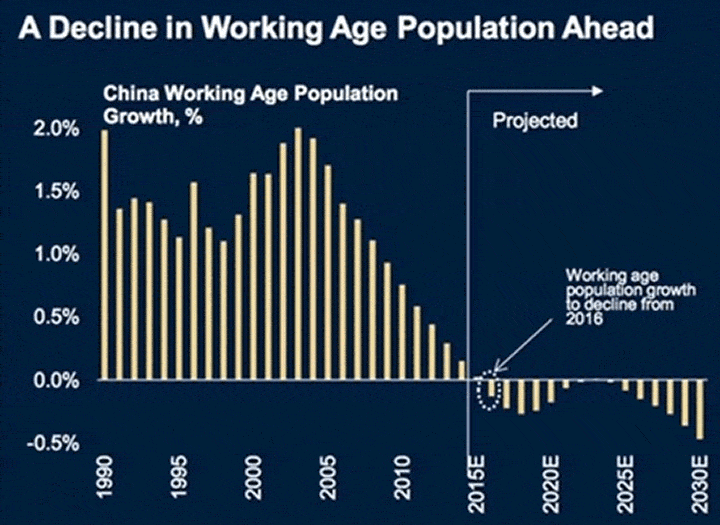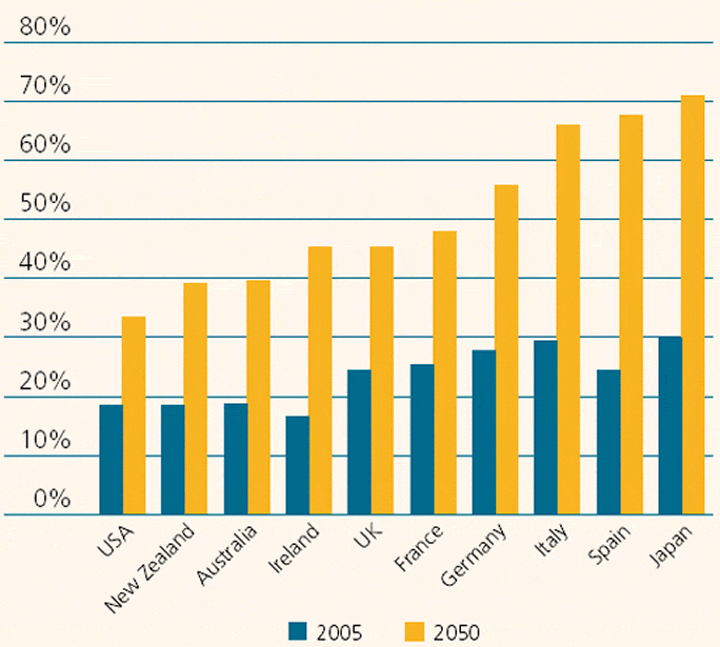China's Market Meltdown: Dangers and Opportunities
Economics / Demographics Sep 11, 2015 - 06:01 PM GMTBy: John_Mauldin
 The buzz around Mauldin Economics’ virtual water cooler these days is El Jefe’s new documentary, China on the Edge. The timing for the online release, September 23, is propitious given the media attention to the meltdown of the Chinese market. The list of participants is impressive, and John has spent considerable time over the last few years wrapping his brain around the staggering number of variables at play in the People’s Republic of China.
The buzz around Mauldin Economics’ virtual water cooler these days is El Jefe’s new documentary, China on the Edge. The timing for the online release, September 23, is propitious given the media attention to the meltdown of the Chinese market. The list of participants is impressive, and John has spent considerable time over the last few years wrapping his brain around the staggering number of variables at play in the People’s Republic of China.
Dear Reader,
The buzz around Mauldin Economics’ virtual water cooler these days is El Jefe’s new documentary, China on the Edge. The timing for the online release, September 23, is propitious given the media attention to the meltdown of the Chinese market. The list of participants is impressive, and John has spent considerable time over the last few years wrapping his brain around the staggering number of variables at play in the People’s Republic of China.
The variable that I’m most interested in, however, is Chinese demographics. Demographics, as they say, is destiny, and China’s demographics are important by virtue of their size. At over 1.35 billion people, the sheer size of the PRC’s population (the largest in the world) is important.
Like many countries across the globe, one of China’s most pressing issues is its rapidly aging population. China’s fertility rate is well below replacement rate, which means that China has seen “peak babies” and is now gliding down the other side of the population curve. China has also passed the point of “peak workers,” a fact that has enormous long-term consequences.
Though most observers expect an end to China's one-child policy adopted in 1979, this change will not reverse baby and labor shortages because the same forces at work in other industrialized countries are already in full-swing in the PRC. The following chart from this article titled "China’s People Shortage" in Sourceable tells the story well.

The irony inherent in China’s demographic reversal is acute. For most of my life, we were told that populations in Asia would continue to increase until overpopulation ended human civilization. Now, however, we are finding out that the opposite is the case—as I and others predicted. This means that the era of rapid, easy growth is over.
GDP, after all, is a function of individual productivity multiplied by the number of workers. Therefore, if the number of workers falls, so does GDP. When GDP falls, so does the revenue available to governments. Governments don’t, however, automatically cut budgets just because their labor force and revenues are shrinking.
This alone is a problem with serious consequences, but it gets worse. The average age of populations with low birth rates rises as life spans increase. This results in huge increases in transfer payments to older people, who have medical costs much higher than those of young people. These increased costs accrue, however, even as the base of contributors shrinks. The result of this inversion looks exactly like what has occurred in Japan—its population slipped down the demographic growth curve a decade ago, taking economic growth along with it.
The crucial factor that you need to grasp is the massive scale of the PRC’s aged population… as well as the country’s obligation to care for this incredibly expensive but nonproductive cohort. It’s also important that you understand that I’m not talking about government programs alone.
The growing population of aged dependents needs care whether governments or families provide it. In either case, resources must be allocated away from financial activities that contribute to future economic growth such as savings and investments. In the past, growing populations caused by higher-than-replacement birth rates contributed to the economic growth needed to pay down debts. Those days are forever gone, though few seem to understand it.
So China’s in the same boat as the rest of us. Its expenses are growing along with the nearly unimaginable debt it has assumed in an effort to move into the twenty-first century. Unfortunately, the country’s tax base (the population of working-age people) is simultaneously shrinking. In other words, the ratio of contributors to beneficiaries is falling and will continue to fall for the foreseeable future.
One way to summarize this trend statistically is to look at dependency ratios (the number of dependents compared to the number of people in the work force). A dependency rate of 20% means that there are 20 dependents for every 100 workers. A 50% dependency ratio means there are two workers per dependent. This is a good summary of the concept, which includes the following chart showing that Japan is expected to have 70 dependents for every 100 workers by the year 2050. Obviously, this is untenable as 1.3 workers cannot support each dependent. China will eventually face a similar scenario.

The Bright Side of Demographic Doom
In other words, this is fantastic news… at least for investors.
The next few decades are going to be marked by the growing recognition that the true threat to civilization isn’t some climatic phenomenon. The real threat has been called the “gray tsunami,” but I personally prefer the “zombie apocalypse” due the skyrocketing rates of dementia that accompany an aging population.
If nothing changes, all human wealth will eventually be required to care for this population of aged dependents. It can, however, be prevented. Any investor who does not understand this will lose out.
There are only two ways to fix catastrophic dependency ratios. I realize that I’ve said this before, but I do so again because it is the biggest predictable economic event of our era… and it will bring unprecedented financial perils and opportunities.
One way to fix dependency ratios is to increase birth rates. This, as I’ve said repeatedly, won’t happen; Japan, Germany, and Scandinavian countries have spent fortunes trying to get their populations to procreate. Indeed, the opposite is occurring. This means that the only way to fix dependency ratios is to work on the other side of the equation—moving people from the dependent column to the contributor column.
Some people fear that there is too much opposition to raising the retirement age for any real Social Security reform to occur. In fact, we’ve already seen this begin to happen in the US simply because boomers (who had their savings shaved by the Great Recession) are putting off retirement out of necessity. Public opinion will come around as our situation becomes more and more dire.
Simply delaying retirement, though, is not the optimal solution. The real solution is to solve the problem of accelerated aging, so that we can extend health spans along with working and investing careers. We need not only to work longer, we need to play and live healthy lives longer.
The biotechnologies needed to accomplish this goal already exist and more are coming out of labs every day. I understand that many uninformed people don’t know or believe me when I say this, but I’m right and they’re wrong. Let me, however, return to China’s aging population problem.
There is an aspect of Chinese culture that is somewhat unique and particularly useful for our purposes. It is an ingrained reverence for the aged. In the English-speaking world, there are environmental extremists who actively lobby against life extension technologies, erroneously assuming that it is better for the planet if older folks die without consuming excessive medical or other resources. The Chinese consider this attitude barbaric and evil, as do I. Moreover, many of the people who run China are older and actively searching for solutions that will keep them active and vigorous. As the efficacy of anti-aging technologies becomes increasingly apparent, China will help advance these solutions for cultural as well as economic reasons. Many, in fact, are relatively inexpensive technologies that would yield enormous health and financial returns.
Incidentally, you can pre-register here, free of charge, to see John’s China documentary.
Patrick Cox
From the TransTech Digest research team: To begin reading Patrick’s Tech Digest newsletter for free each Friday, simply click here. At Patrick’s Transformational Technologies site, you can join Tech Digest by entering your email address at the top right of the page. Thanks for reading.
© 2005-2022 http://www.MarketOracle.co.uk - The Market Oracle is a FREE Daily Financial Markets Analysis & Forecasting online publication.



